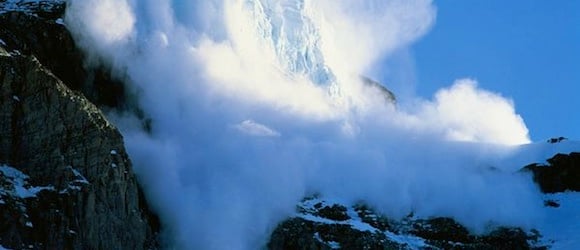The process of studying how snow and ice form and change over time is a tricky one. For one thing, while we can simulate the formation of snow in a laboratory, we’re only reasonably certain that this is one of the ways that it can form, a process highly dependent on humidity, temperature, and wind speed and direction. Studying the formation of snow “in the wild” is understandably difficult, as it happens on a microscopic scale in the middle of dense, waterlogged clouds. Studying snow on the ground means shielding it from both physical pressure, unnatural air movements, and heat, from you and your instruments. Those high quality photographs you’ve seen of individual snowflakes were painstakingly taken on chilled slides without the aids of heat-radiating photography lights, seconds before they melted.
So it’s no wonder that the people out there with the most interest in how frozen liquids respond to temperature changes are still figuring it out. No, I’m not talking about meteorologists. I’m talking about the people who make ice cream.
See, there’s a particular kind of X-Ray machine that was invented to peer into the microscopic structures of ice crystals, to figure out which kinds of formations are at the root of avalanches, in order that it become easier to predict where and when they’re going to happen. And Nestle, with the help of scientists at the Institute for Snow and Avalanche Research in Davos, Switzerland, is using it to look at ice cream.
Like I said: an entirely appropriate application of science technology. Says Nestle food scientist Dr. Cedric Dubois, who has one of the best name/title combos I’ve seen in a while:
Previously, we could not look inside ice cream without destroying the sample in the process…
Most home freezers are set at -18C, but the temperature doesn’t remain constant. It fluctuates by a couple of degrees in either direction, which causes parts of the ice cream to melt and then freeze again…
We already know the growth of ice crystals in ice cream is triggered by a number of different factors. If we can identify the main mechanism, we can find better ways to slow it down.
The proper distribution of the various ingredients of ice cream throughout its matrix is pretty important, if you want proof just look at all the different kinds of ice cream we have based simply on how much milkfat is included in them. When parts melt and freeze repeatedly, that matrix gets mixed up (or, at least, mixed in a way that was unintended) and you wind up with chewier, harder to scoop or less flavorful ice cream.
In conclusion: Internet, when I did a google search for “ice cream avalanche” there was no appropriately photoshopped image available. I am disappoint.
(via I Heart Chaos.)








Published: Mar 28, 2012 02:47 pm